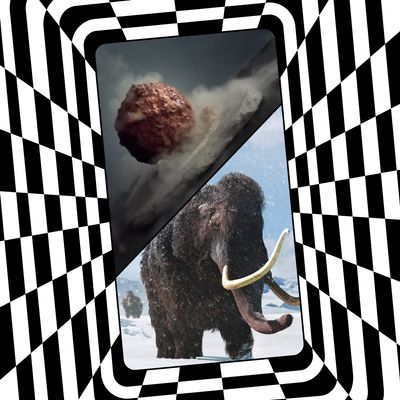
I Can’t Shut Up About: Deep dives into my online obsession of the week.
I hate to be the one to tell you this, but they made the woolly mammoth into a meatball. And what’s worse? Scientists are too scared to eat it.
@lindsaynikole they turned the woolly mammoth into a meatball #woollymammoth #iceage #meatball
♬ original sound - simbah🌹
Last week, an Australian company debuted the world’s first — and, God willing, only — meatball made with woolly mammoth. How exactly do you create a meatball from an animal that’s been extinct for over 4,000 years? With patience, a point to prove, and the DNA sequence for woolly-mammoth myoglobin, the protein that gives meat its color, taste, and smell. In partnership with the University of Queensland’s Institute for Bioengineering, cultured-meat company Vow combined the mammoth myoglobin with DNA from an African elephant, the woolly mammoth’s closest living relative. They then inserted that DNA into sheep cells, which then multiplied into tens of millions of cells to become this behemoth of a meatball. Of course, this presents more questions than answers. So here is a brief guide to the woolly-mammoth meatball.
Why would they do this to me?
The meatball was created as a commentary on the environmental impact of agriculture and presented as a representation of viable alternate meat options. Animal agriculture accounts for an estimated 15 percent of greenhouse-gas emissions with 30 percent of the Earth’s land being used to raise farmed animals or grow the crops that feed them. Meat has also been known to cause brawls at the Golden Corral and give James “You’re Beautiful” Blunt scurvy. Though animal DNA and cells were used in its creation, no animals were killed in the making of the meatball.
How come they made a giant meatball and not, say, several sensible burger patties?
According to the Vow, “the meatball is one the most iconic foods.” An indisputable fact. The meatball is an icon. They also noted it’s an accessible and affordable dish, which is “exactly what we hope to achieve for cultured-meat products in the future.” Also, little sliders probably seemed too crass.
What did they do with the meatball?
The mammoth meatball made its debut at the NEMO Science Museum in Amsterdam to an audience who probably licked their chops like, “Mmm, come to Papa!” While its exact dimensions weren’t given, the meatball has been described as somewhere between a softball and a volleyball in size. To me, it looks like a small cantaloupe.
Why does it look like … that?
The meatball has a sheen to it, likely thanks to the glaze that was applied to keep the meatball intact during transport. As for why it looks like prop food from Dinosaurs or the kind of challenge Guy Fieri would gladly take on, that remains unclear. Regardless, its size pales in comparison to the world’s largest meatball but seems equally unappetizing.
So, uh, they cook-a the meatball?
They cook-a the meatball! It was slow baked before being finished off with a blow torch. The hungry freaks who witnessed the meatball said it “smelled good,” comparing the aroma to crocodile meat, a comparison that also poses more questions than answers.
Can I eat it?
No, you may not. Scientists aren’t sure how the human body would react to the 4,000-year-old meat. As the chief scientific officer for Vow told CNN, “I’ve got no idea what the potential allergenicity might be of this particular protein.” However, there is one person whose body may be able to handle the mammoth meatball: Love Dalén, a professor of evolutionary genomics at Stockholm University’s Centre for Paleogenetics who tried a small piece of frozen mammoth during an expedition in Sibera. Dalén told CNN he would “love to try this.” As for the rest of us, best to stick to crocodile.
Okay, now what?
With the meatball? Scientists at Vow are hopeful that it will pave the way for other alternative, sustainable meat products. However, this isn’t the first prehistoric culinary stunt. In 2018, a different food start-up used mastodon DNA to create gummy bears, swapping out the typically animal-based gelatin for lab-made substitute. Also, people have been trying to “bring back” the woolly mammoth for a few years, which, given its recent meatball-ificiation, now feels like a threat.
How will humanity be punished for this?
The only apt consequence is to somehow bring back the recently extinct smooth handfish, a creature named for its human-hand–like fins and had the ability to walk on the ocean floor. Just try to make a meatball out of that, science!

